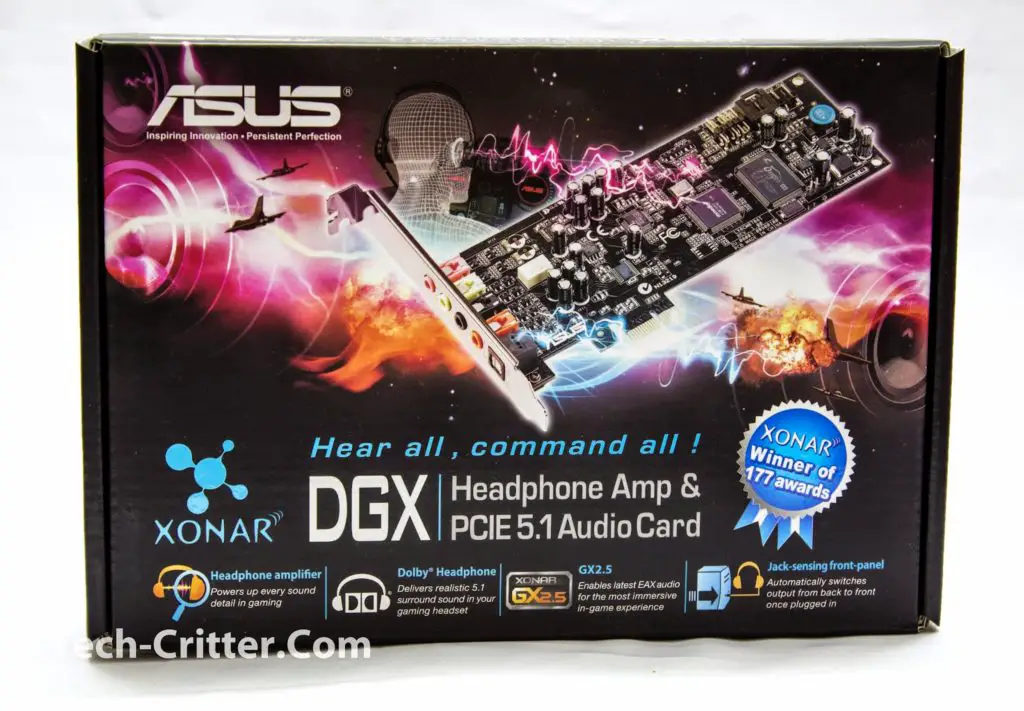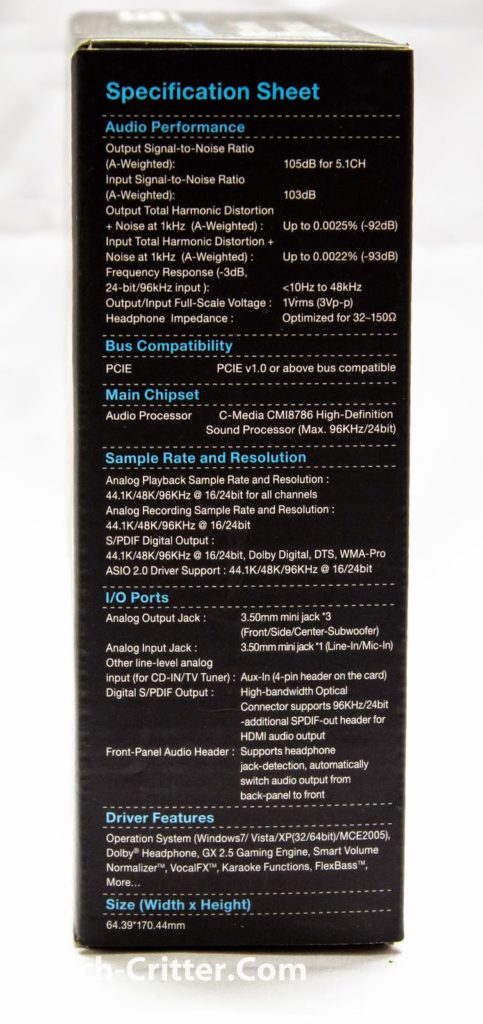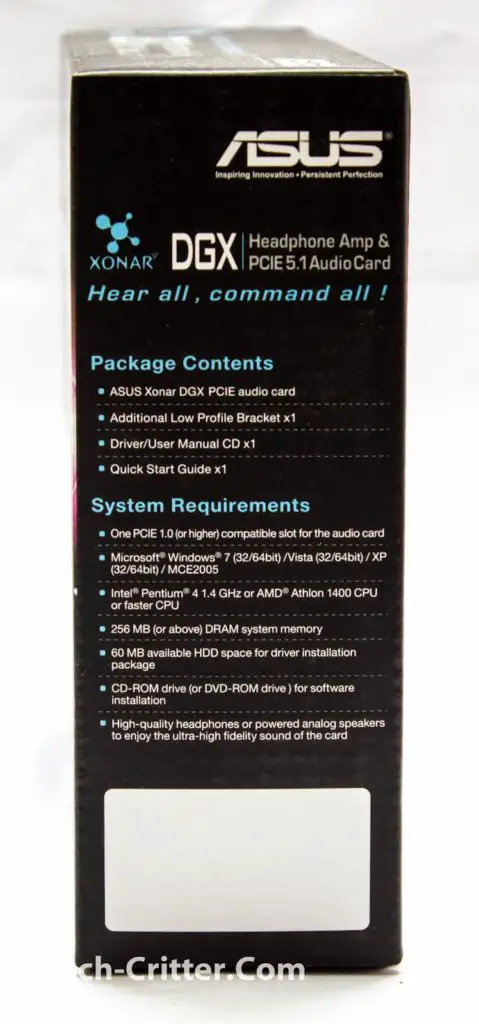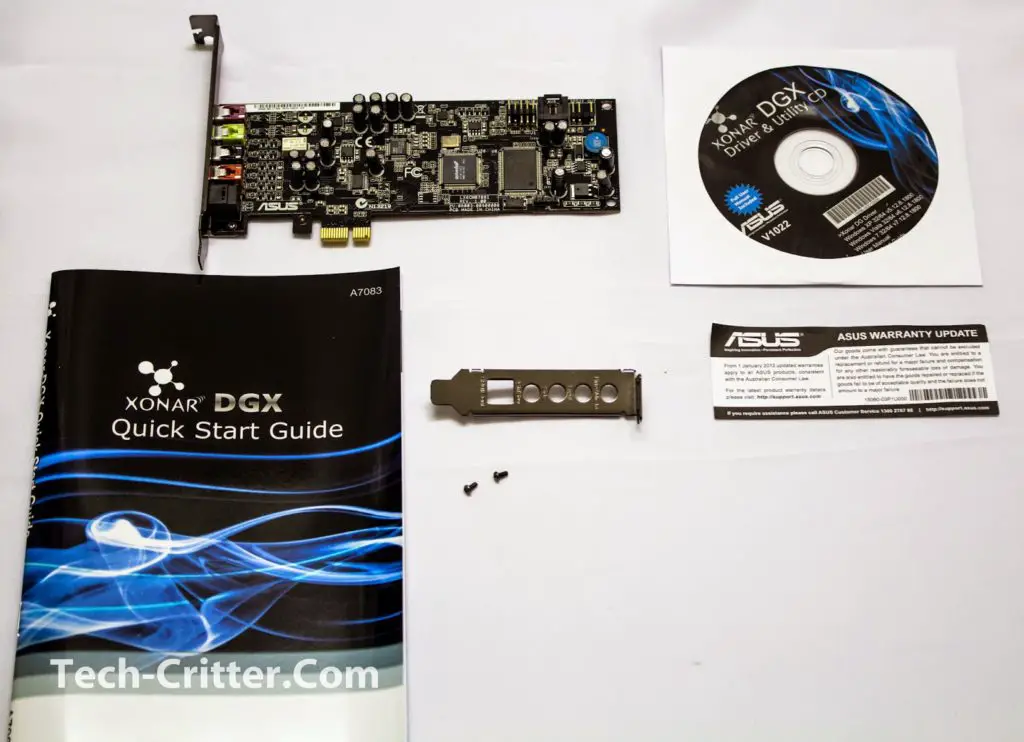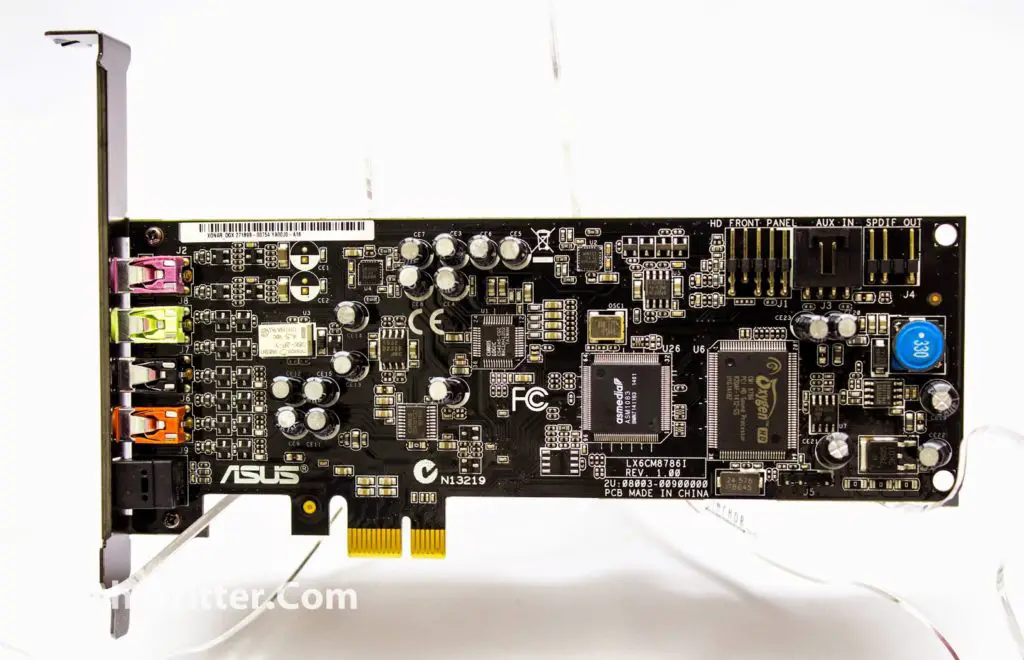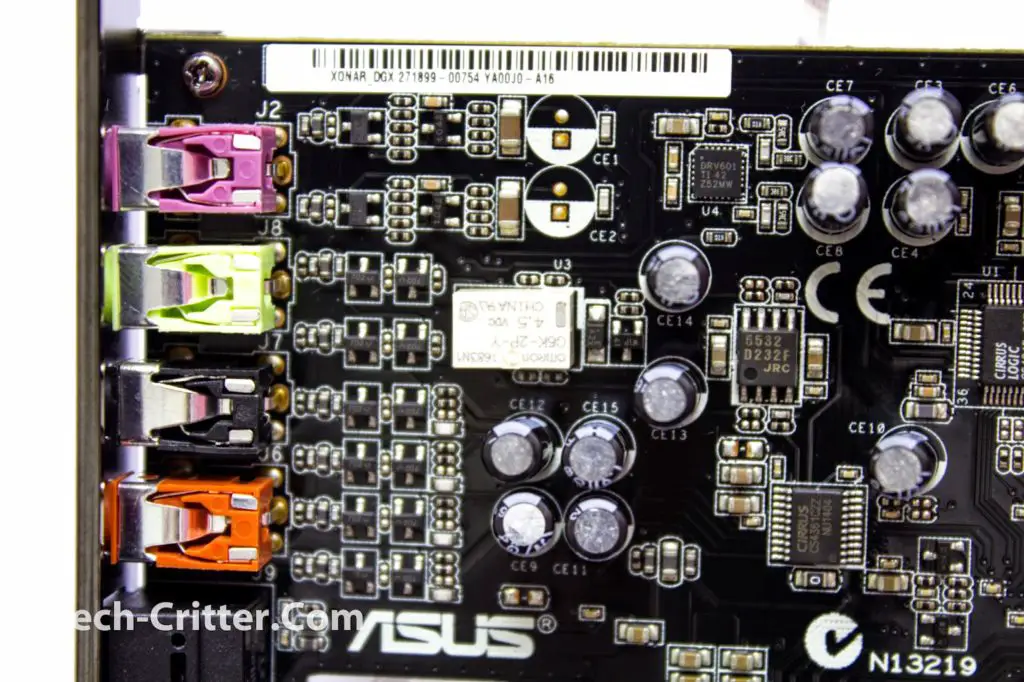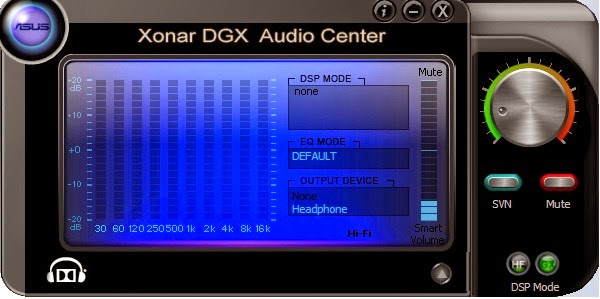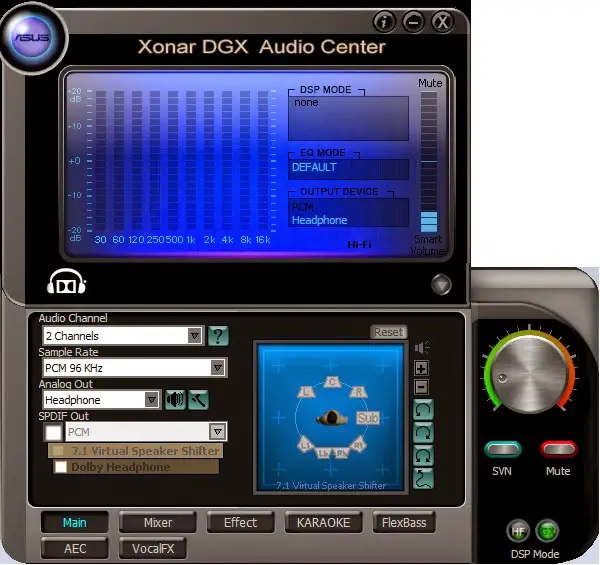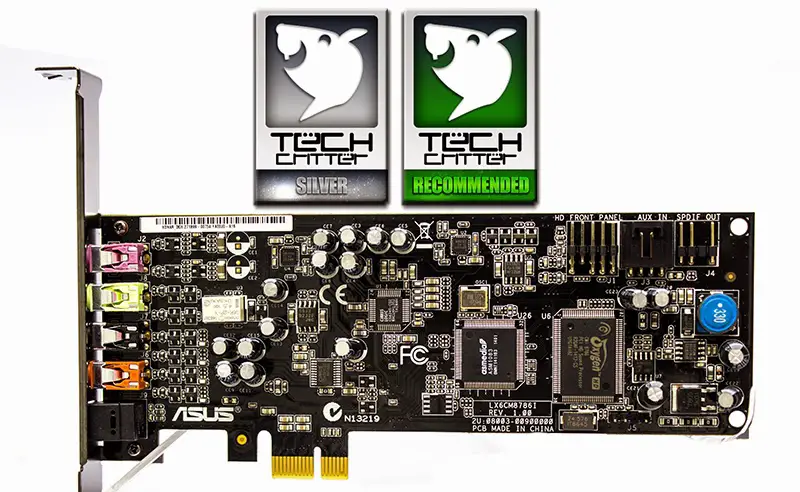“Wanna play games? Get a good CPU, a powerful GPU and enough RAM to run it! Wait… good sound? Oh no worries, the motherboard has an integrated sound card”
Sounds familiar? well, it is true that motherboards nowadays have decent sound modules built into them but why do people still buy dedicated sound cards? in fact, why is it that dedicated sound cards still exist in the market? well, we shall find out.
Thanks to Asus for providing the Xonar DGX, they actually have higher-end ones but I choose the DGX simply because it boasts a built-in headphone amp. Retailing at RM139 in the Malaysian market, let’s unbox!
Specifications
- Audio Interface: PCI Express
- Output Signal-to-Noise Ratio (A-Weighted) (Front-out): 105 dB
- Input Signal-to-Noise Ratio (A-Weighted): 103 dB
- Output THD+N at 1kHz (Front-out) : <0.0025 %(-92 dB)
- Input THD+N at 1kHz : <0.0022 %(-93 dB)
- Frequency Response (-3dB, 24bit/96KHz input) : 10 Hz to 48 KHz
- Output/Input Full-Scale Voltage: Chipset
- Audio Processor :C-Media CMI8786 High-Definition Sound Processor (Max. 96KHz/24bit)
Sample Rate and Resolution
- Analog Playback Sample Rate and Resolution : 44.1K/48K/96KHz @ 16bit/24bit
- Analog Recording Sample Rate and Resolution : 44.1K/48K/96KHz @ 16bit/24bit
- S/PDIF Digital Output : 44.1K/48K/96KHz @ 16bit/24bit
Special Features
- Smart Volume Normalizer™
- Xear 3D™ Virtual Speaker Shifter
- Magic Voice™
- Karaoke Functions
- FlexBass™
- 10-band Equalizer
- 27 Environment Effects
- GX2.5 Gaming Audio Engine
- VocalFX™
Accessories
- Low -profile Bracket x 1
- Driver CD x 1
- Quick Start Guide x 1
- Dimensions: 170.44 x 64.39 mm ( L x W )
Packaging
The DGX comes in a dark box with a sound card in the middle of the front fascia. Asus branding is at the top while the make and model along with some highlights are down below.

At the back is a table with multiple languages of the features.
While the sides have information on the specifications and what’s inside.
Emptying the contents, you’ll find a Quick Start guide, a low profile bracket, 2 screws, driver CD, Warranty notification and also the Xonar DGX soundcard.
The Product
The Xonar DGX is bare, literally. Every component and connector are not covered in some fancy-looking metal piece, which is excessive anyway given that the DGX will sit inside the chassis when in use. The DGX plugs in directly to a PCI-E 1X but it’ll work just fine on a 4X, 8X or even a 16X PCI-E lane.
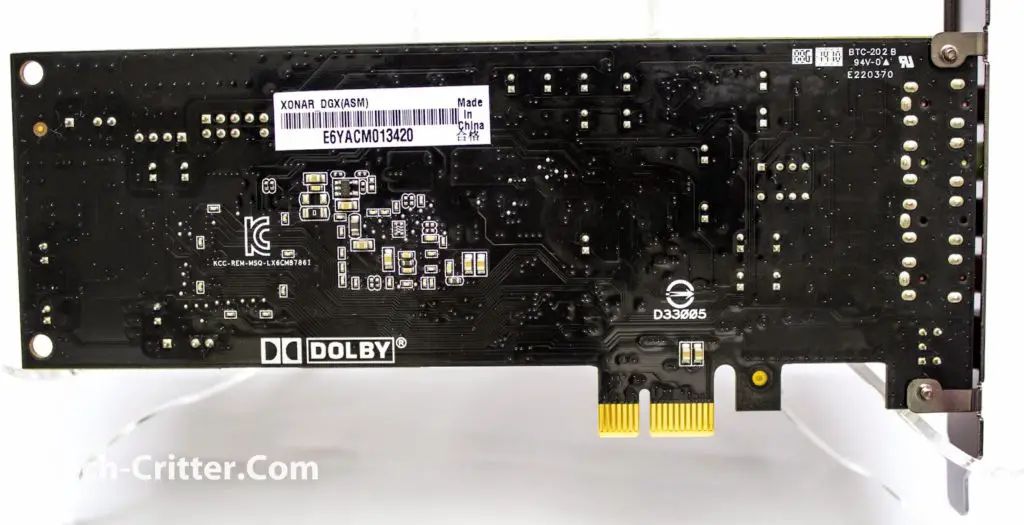
Just a quick check on the soldering behind the PBC, Asus did a good job here, neat and tidy. The black PCB is of course, a bonus.

Turning the Xonar DGX to the PCI-E bracket side is where one would plug in their speaker system via 3.5mm audio jacks and/or SPDIF for a true 5.1 surround configuration.
A Texas Instrument DRV601 headphone amp can be seen here just to the left of the cluster of capacitors at the top.
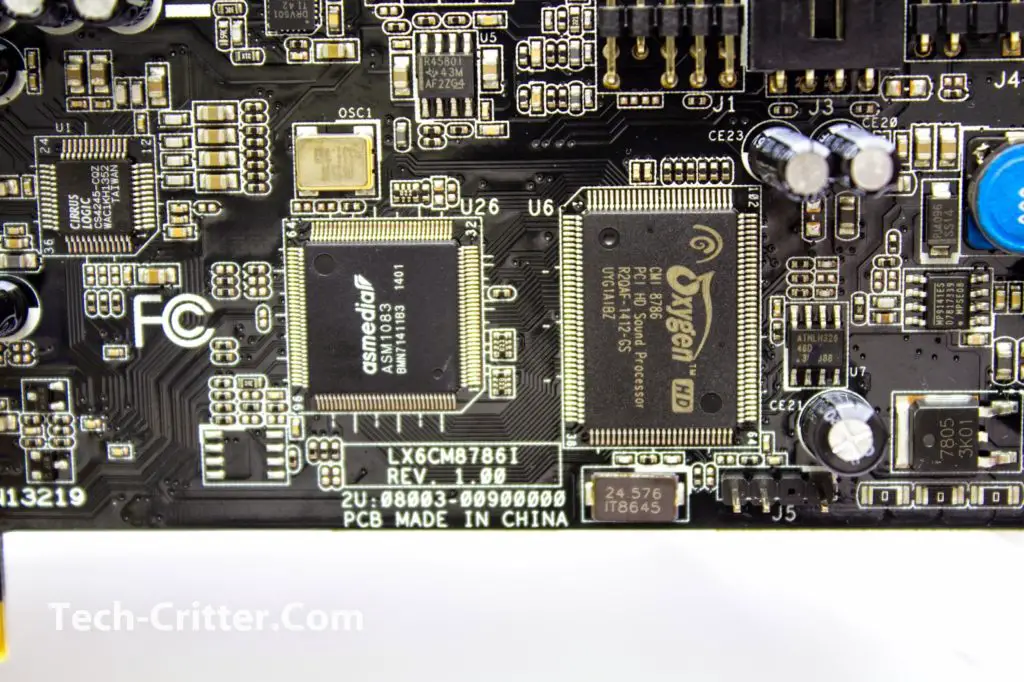
A little to the middle of the DGX lies the Oxygen HD CMI8786 audio chip for up to 8-channels.
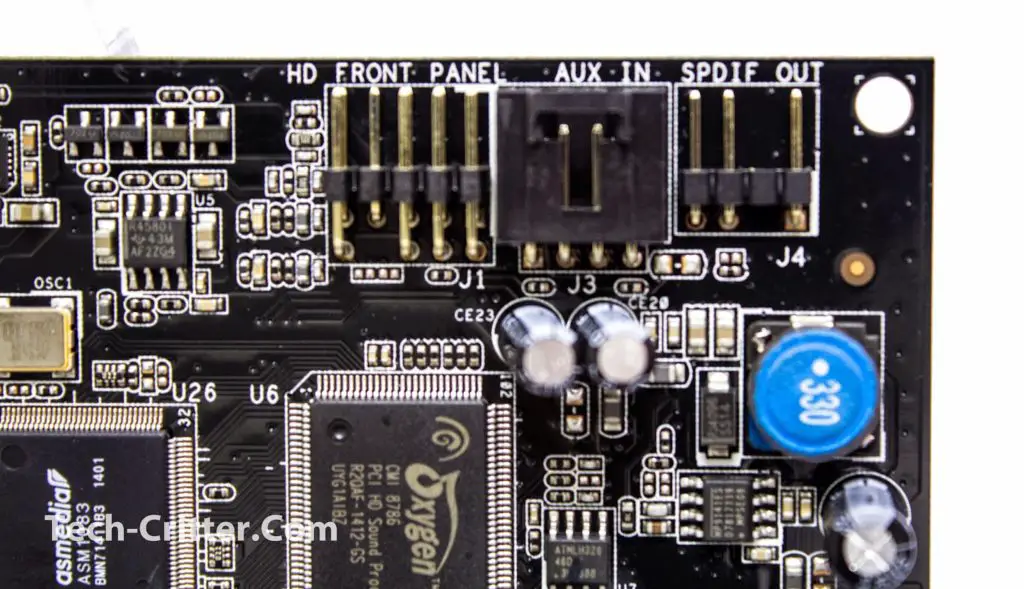
A number of internal connectors are located at the top edge for your Front panel audio, auxiliary input and S/PDIF output headers.
The Software
The Xonar DGX software or Audio Center doesn’t take much effort to install so you’ll pretty much be seeing the screens below in a short amount of time.
Activating the software, you’ll be greeted by a simple virtual amp-like controller of which you could immediately adjust the volume, SVN and mute on the right panel. The overall bluish panel displays all the info you need such as your settings and sound samples when there’s audio.
Clicking on the small arrow at the bottom right shifts the info screen up to reveal the control panel with 7 different functions that you could adjust to your heart’s content with features built into the software such as Magic Voice™, Karaoke functions, FlexBass™ is a bonus complete with a 10 -band Equalizer and 27 Environment Effects. It is a simple piece of software but the customization is vast so one can bet that they’ll find a setting that’s suitable for your listening pleasure.
Testing
On the BitFenix Flo, everything works as it should when it is plugged into the Asus Maximus VII Ranger and the Xonar DGX, in fact, I could barely tell the difference between the two solutions. I did pick up a buzzing noise when testing with the on-board sound from the MSI G41M-P33 motherboard but the 5HV2 USB 7.1 sound card totally misses the mids and has an airy sound to the whole playlist.
The Turtle Beach X31 worked well under all solutions. There is still a little buzzing noise from the MSI G41M-P33 motherboard and the 5HV2 manages to pump up the mids this time around but the airy feeling is still present. The results are the same when tested with the Audio Technica CKL200.
Just for fun, I plugged in the Xonar DGX into the MSI G41M-P33 motherboard and we manage to get rid of the buzzing noise most likely caused by interference of the motherboard itself as it essentially is a big circuit board. Having the audio placed away from the main circuitry eliminates that problem and of course a better sound quality now that the Xonar DGX have taken over the sound processing.
Conclusion
I think that the Asus Xonar DGX is a great addition to your PC if you’re having disturbances with your current on-board audio solution (such as the one with the MSI G41M-P33 motherboard) or when a portable solution is insufficient to drive your headset and/or speakers. Not only will you get rid of the problem that’s been plaguing you but also have an upgrade in sound quality as well. At this price, it is a rather small investment for better-quality audio. However, if you already have decent onboard audio such as Asus’ own ROG SupremeFX, you might not need the Xonar DGX to drive your headset/speakers unless they require more amplification; usually true for higher-end headphones or speakers.
I think the Asus Xonar DGX PCI-E 5.1 Sound Card is here to stay given that there will be some of us who would want to get better sound quality while being friendly to the wallet. Inexpensive and a great performer, it well deserved a Tech-Critter Silver and Recommended badge.


